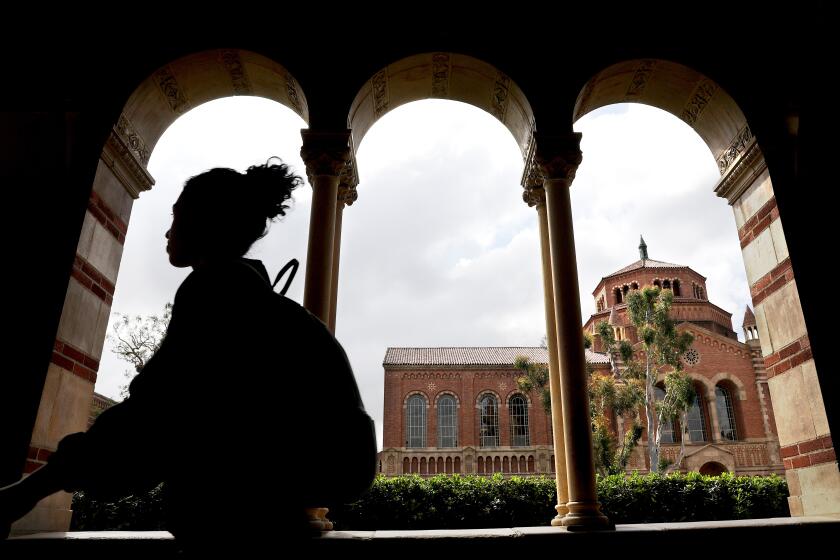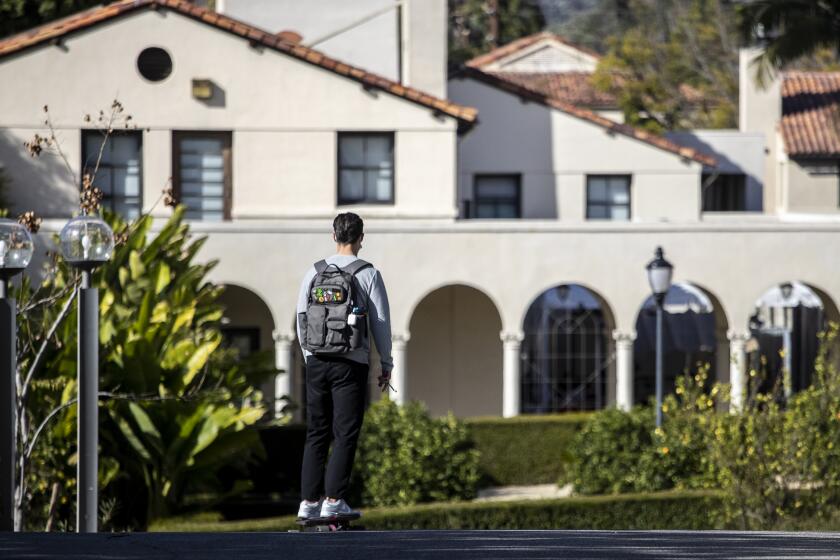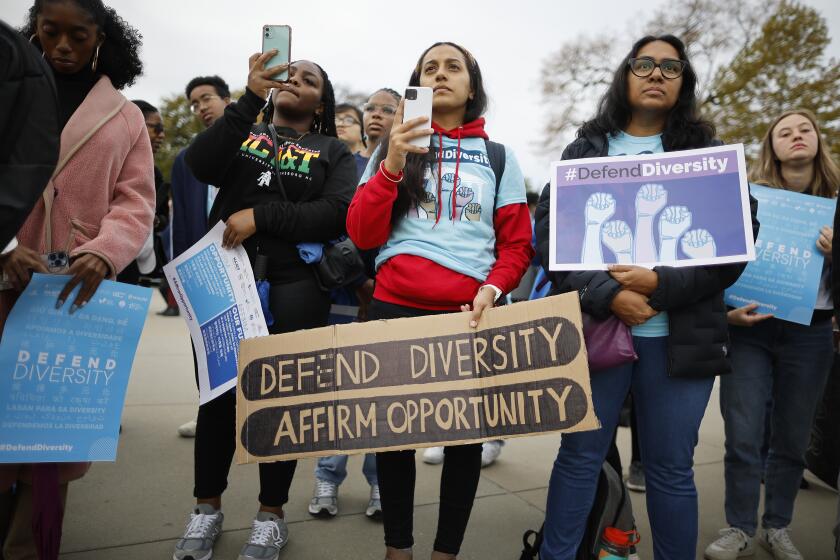Supreme Court strikes down race-based affirmative action in college admissions
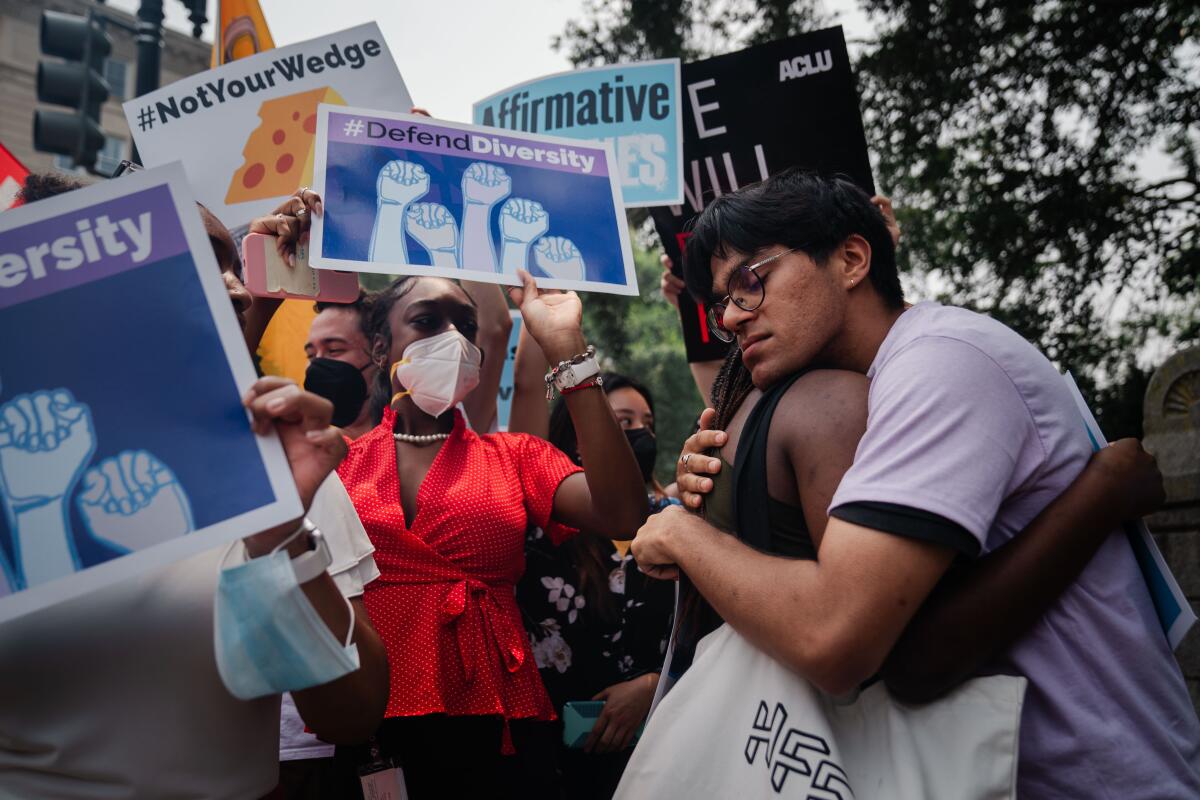
WASHINGTON — In another major reversal, the Supreme Court on Thursday struck down affirmative action policies at colleges and universities that use race as a factor in deciding who is admitted.
In a pair of decisions, the six conservative justices ruled that Harvard, the nation’s oldest private college, and the University of North Carolina at Chapel Hill, the oldest state university, were illegally discriminating based on race and violating the 14th Amendment of the Constitution.
Chief Justice John G. Roberts Jr. said the Constitution forbids treating people differently based on their race.
“The entire point of the Equal Protection Clause is that treating someone differently because of their skin color is not like treating them differently because they are from a city or from a suburb, or because they play the violin poorly or well,” he wrote.
Debate leading up to the Supreme Court’s decision has stirred up plenty of misconceptions. We break down the myths and explain the reality.
In dissent, liberal Justices Sonia Sotomayor and Ketanji Brown Jackson accused the majority of ignoring America’s history as well as continuing racism today. “Our country has never been colorblind,” Jackson wrote.
“Today, this court stands in the way and rolls back decades of precedent and momentous progress,” Sotomayor wrote, joined by Justice Elena Kagan. “The court cements a superficial rule of colorblindness as a constitutional principle in an endemically segregated society where race has always mattered and continues to matter.”
While the ruling will force many universities, including their law and medical schools, to change admissions policies, it won’t prevent them from pursuing diversity or giving extra consideration to students who have overcome hardships or discrimination.
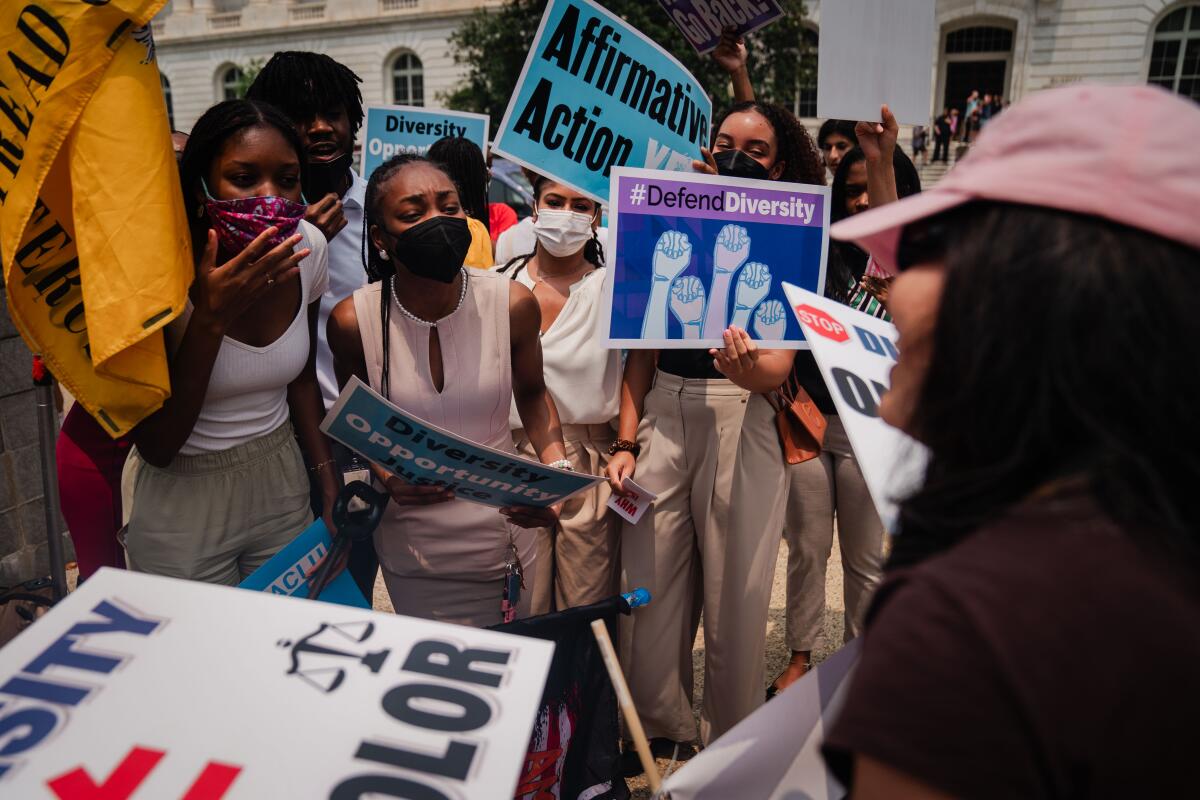
School officials are likely to focus on a passage near the end of the chief justice’s 40-page opinion:
“Nothing in this opinion should be construed as prohibiting universities from considering an applicant’s discussion of how race affected his or her life, be it through discrimination, inspiration, or otherwise,” Roberts wrote. “A benefit to a student who overcame racial discrimination, for example, must be tied to that student’s courage and determination. Or a benefit to a student whose heritage or culture motivated him or her to assume a leadership role or attain a particular goal must be tied to that student’s unique ability to contribute to the university. In other words, the student must be treated based on his or her experiences as an individual — not on the basis of race.”
The vote was 6 to 3 in the North Carolina case and 6 to 2 in the Harvard case, from which Jackson, a former member of Harvard’s Board of Overseers, recused herself.
Affirmative action, like abortion, has been a target of the conservative legal movement for decades, and the court’s liberal precedents on these two major issues were put in danger when President Trump and Senate Republicans succeeded in appointing three new justices.
The impact of the rulings is likely to be limited in California, however. The University of California and the California State University systems are prohibited from using race as an admissions factor under a ballot measure approved by voters in 1996. In 2020, voters rejected a measure that would have overturned the 1996 ban.
Eight other states have followed California’s lead in forbidding race-conscious admissions policies at state universities, including Michigan, Florida and Washington.
But the ruling in the Harvard case extends that prohibition to private universities, including Stanford and USC.
The Supreme Court’s ban on affirmative action has triggered angst on campuses about how to promote diversity without considering race in admissions decisions.
President Biden joined many Democrats and progressives in slamming the majority opinion.
“I strongly, strongly disagree with the court’s decision,” Biden said in remarks at the White House. “Discrimination still exists in America. Today’s decision does not change that.”
He proposed new guidance for colleges in the wake of the decision, urging them to take into account the adversity a student has overcome in the admissions process. “We need a new path forward, a path consistent with the law that protects diversity and expands opportunity,” he said.
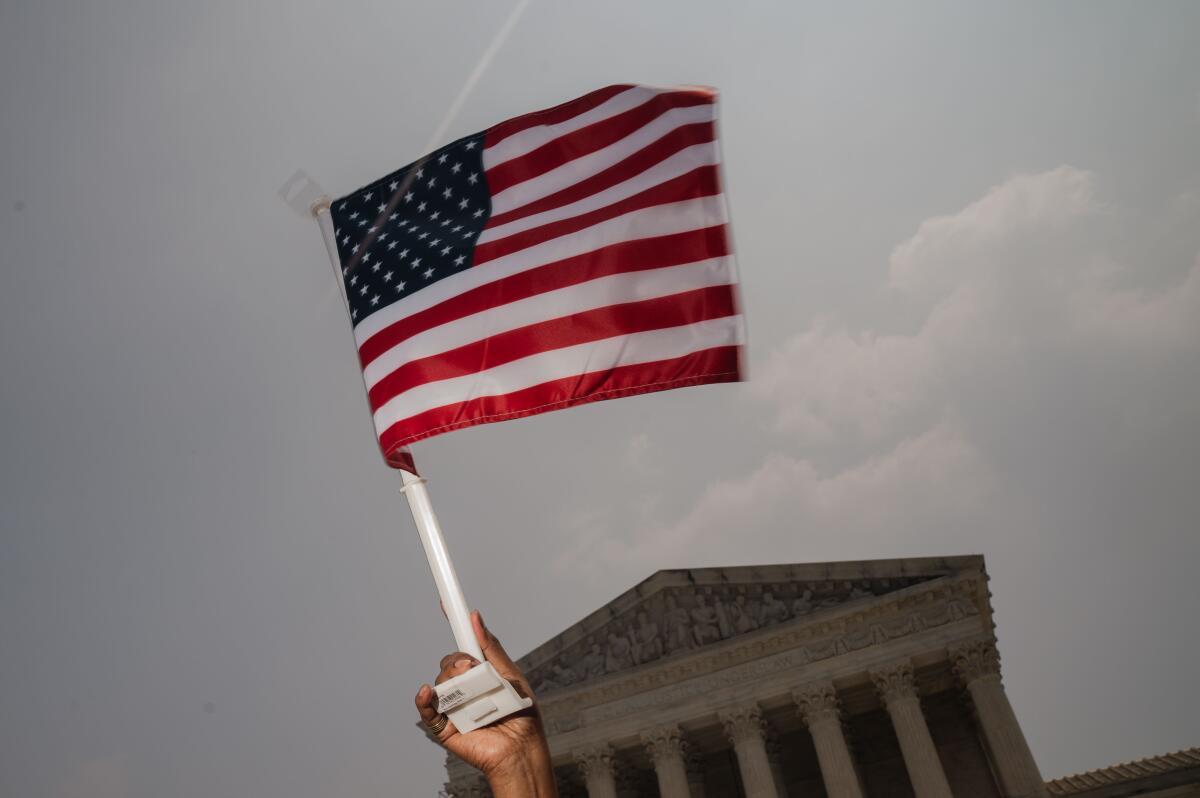
In its opinion, the high court criticized rulings dating to 1978 that held that universities had a compelling interest in seeking racial diversity on campus and could consider the race of Black and Latino students as a plus factor when choosing among well-qualified applicants.
Those precedents had remained under challenge from conservatives, who argued that the Constitution and the civil rights law prohibited discrimination based on race, even where the consideration of race was intended to increase diversity and correct past injustices.
A group called Students for Fair Admissions, created by financier Edward Blum, accused Harvard of discriminating against Asian American applicants in favor of Black and Latino applicants. He then filed a separate lawsuit against UNC for similar discrimination.
Those suits lost in the lower courts. Judges said the two universities had made careful and limited use of race in seeking a diverse class of new students.
The idea that Asian Americans need higher SAT scores than others to get into Harvard is a fallacy based on a misreading of a study that didn’t look at other admissions factors.
But the Supreme Court, with six conservatives, voted last year to take up the appeals.
Blum hailed the outcome as a long-sought victory. The Supreme Court’s opinion “marks the beginning of the restoration of the colorblind legal covenant that binds together our multiracial, multiethnic nation,” he said. “The polarizing, stigmatizing and unfair jurisprudence that allowed colleges and universities to use a student’s race and ethnicity as a factor to admit or reject them has been overruled.”
Times staff writer Courtney Subramanian in Washington contributed to this report.
More to Read
Get the L.A. Times Politics newsletter
Deeply reported insights into legislation, politics and policy from Sacramento, Washington and beyond. In your inbox three times per week.
You may occasionally receive promotional content from the Los Angeles Times.
